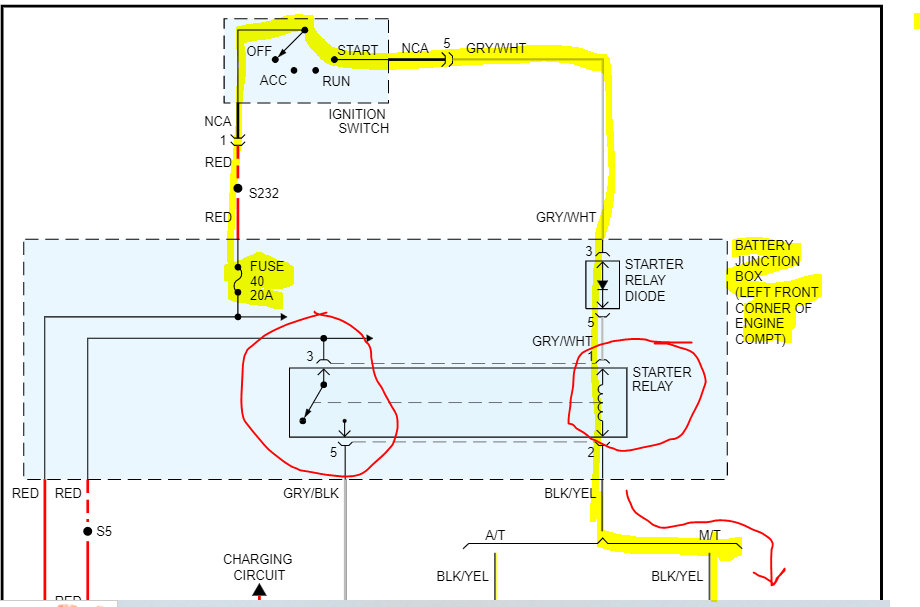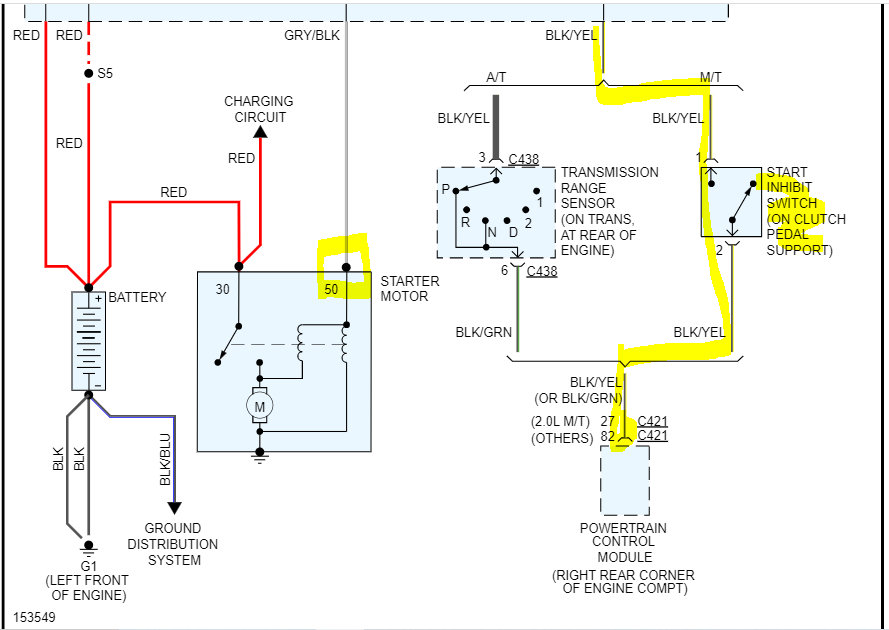Chris,
I went through the wiring schematic, and it is a straightforward system. Power is delivered to the ignition switch via fuse 40 (20 amp) in the battery junction box. From the switch, power is sent to the starter relay (primary side), through the clutch safety switch, and to the powertrain control module which provides a ground. The ground completes the primary side of the relay circuit which engages the secondary side. That is what ultimately triggers the starter to engage.
Take a look at the schematic below and follow what I highlighted. (Pics 1 and 2)
So, if I had this vehicle, I would first check fuse 40, making sure it has power to and from it. If that is good, then I would go to the clutch safety switch and check the black wire with a yellow tracer to confirm it has power. If it does, depress the clutch and confirm there is power out. If there is no power to the safety switch, remove the relay and check it. If you have a different one in the box with the same part number, switch them. If there isn't one, here is a link that explains how to test one:
https://www.2carpros.com/articles/how-to-check-an-electrical-relay-and-wiring-control-circuit
If the fuse is good, the relay is good, the safety switch is good and they are all working, either the starter is bad or there is no ground supply from the PCM to the relay.
If that is the case, have a helper turn the key to the start position while you check for power to the gray wire with a black tracer at the starter motor itself. This wire should only have 12v when the key is in the start position. If it does and the starter doesn't engage, replace the starter.
Let me know what you find or if you have other questions.
Take care,
Joe
See pics below.
Images (Click to make bigger)
SPONSORED LINKS
Monday, September 19th, 2022 AT 8:43 PM






